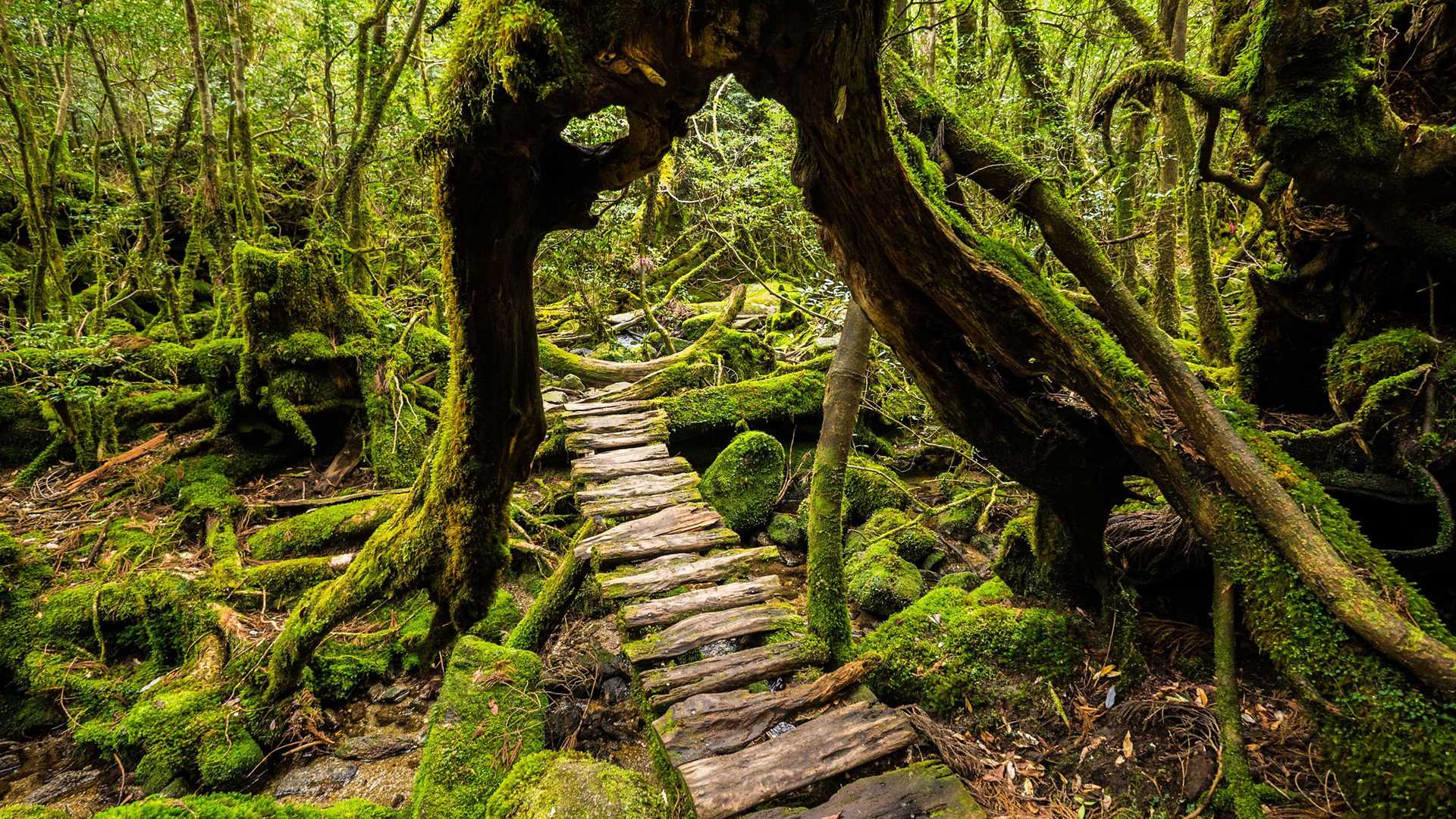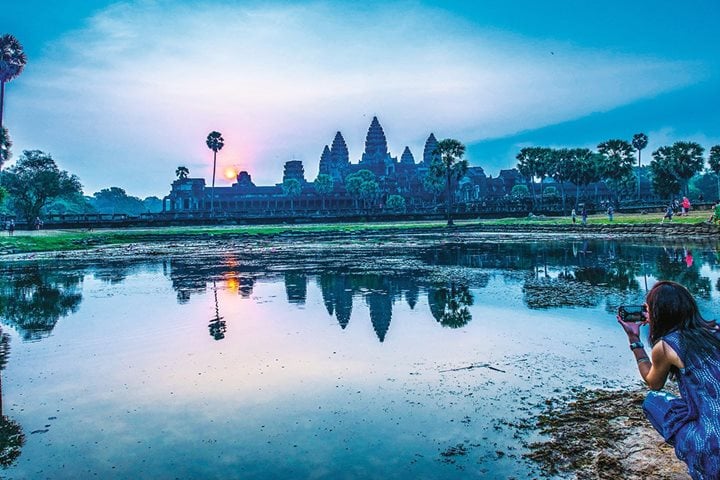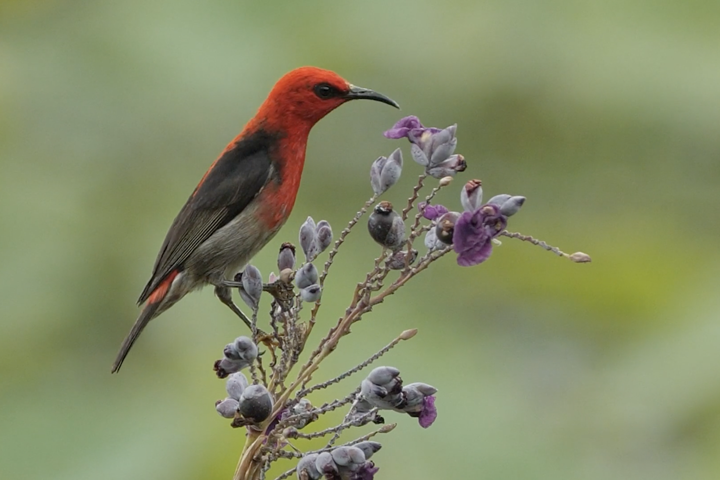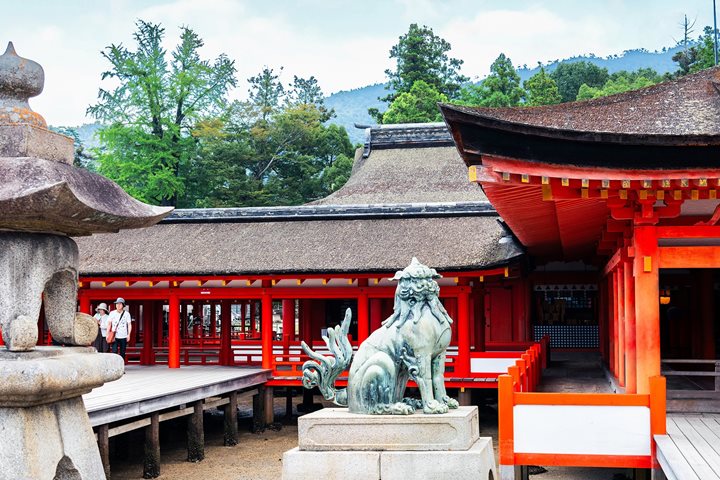The Japanese have long known the value of a walk in the woods. From the indigenous wisdom of Shintoism to the comparatively modern practice of forest bathing, or shinrin-yoku, a common belief remains clear: time spent in nature is healing. Science supports this, too. Recent research shows that just one day spent in the forest is enough to spur significant mental health benefits. Get Inspired by Photos, Videos, Webinars, Stories, and Exclusive Offers. Sign Up
If a mindful walk in your local park could be considered a bath, then a hike on Japan’s Yakushima Island is a lush, leisurely spa day for the soul. Some of the island’s footpaths date back to the Edo period (1603-1867). Today, these root-riddled trails remain as remnants of a wilder, primeval Japan—winding on past thousand-year-old trees and thundering waterfalls to some of the greenest places on Earth.
Ready to plunge into the mystical forests of one of Japan’s most stunning natural gems? Here’s what awaits on Yakushima Island.
When Climates Collide
On the map, Yakushima appears as a near-perfect circle off the southern coast of Kyushu. This mountainous isle rises from sea level to nearly 6,500 feet at what’s known as a biogeographic boundary—where the borders of two distinct ecoregions meet. Within its 200 square mile, a microcosm of Japan is represented—from the subtropical beaches of Okinawa to the subarctic peaks of Hokkaido. In between, there lies a swath of ancient temperate rainforest UNESCO has called the last, best example of its ecosystem on Earth.
Thanks to the warm, north-flowing Kuroshio Current, Yakushima is also Japan’s wettest place, so much so that locals jokingly say it rains “35 days a month.” This doesn’t mean the island never sees the sun; but the sheer volume of rainfall is what’s so impressive. For perspective, the coast gets about 118 inches annually, an amount equivalent to the notoriously soggy United Kingdom. In the mountains, though, the skies can summon more than 390 inches of water each year—draping the granite mountain sides in mist and moss; feeding crystalline rivers and cascading falls; and nourishing a plethora of plant and animal life.
A Haven of Biodiversity
With a population of just 13,100 people, humans are far outnumbered by wildlife. Its most photogenic residents, the endemic Yaku sika deer and Yakushima macaque, are often spotted along the roadside and 150 bird species can be found on the island, including important populations of Japanese wood pigeons, Ryukyu green pigeons, and Ryukyu robins. Most notably, the northeastern coast harbors vital nesting grounds for migratory loggerhead turtles on the silky sand and turquoise waters of Nagatahama Beach.
The further you venture inland, however, signs and sounds of fauna begin to fade; the flora rule this realm. More than 1,900 species and subspecies of plants thrive in this verdant paradise—from the coast’s epic banyan trees to the mountains’ ancient Japanese cedars, dozens of endemic bryophytes decorating their bark. Ascending, the temperature continues to drop and the air grows damp and pine-scented. In ravines like Shiratani Unsuikyo, the forest is wrapped in a fur of floor-to-canopy mosses. Near everything seems green and soft, as if you’ve been swaddled in the womb of Mother Nature herself. It’s at once otherworldly and grounded on this earth as a place could possibly be.
The Storied Yakusugi Trees
Sugi trees, cryptomeria japonica, are endemic to Japan. Though they’re not related, sugi are often compared to cedars for their ridged, red-toned bark. On the mainland, they can live for up to 800 years but, in Yakushima, there is an abundance of yakusugi, trees that are more than 1,000 years old. They grow in the mountains—where moss sometimes serves as a soil substitute—and are shaped by strong wind, heavy rain, and typhoons. As with many of nature’s most resilient species, adaptation to these harsh conditions is exactly what lends yakusugis their longevity.
In no rush to grow, sugi build up high amounts of waterproof resin, which protects against decay and disease. Unfortunately, it also makes for excellent roof shingles, and so sugi were subject to logging from the Edo era until the 1970s. A few dozen yakusugi managed to survive, likely because they seemed too complicated to cut down. Bulbous and branching, their strangeness is what saved them.
In nature reserves like Yakusugi Land, signage shares the names of these trees and guides relay their stories—both fact and fantasy. There’s Meotosugi, two yakusugi cedars connected by a branch more than 30 feet in the air, seeming to hold hands; and Kugurisugi, whose split trunk straddles the trail. And then, there is the awe-inspiring, 80-foot-tall Jomon Sugi, the largest and oldest of them all at an estimated 2,170-7,200 years old.
On the hike to Jomon sugi, you will also pass domaiboku, the remains of felled yakusugi. The most famous, Wilson’s Stump, has a circumference of over 100 feet. There’s plenty of room to stand inside its hollowed-out core, where a fresh spring trickles from the ground. If you look upward at just the right angle, the opening appears heart-shaped, framing the canopy in this clichéd but unmistakable symbol of love and life. And there you are, in the heart of the forest—of it all.




